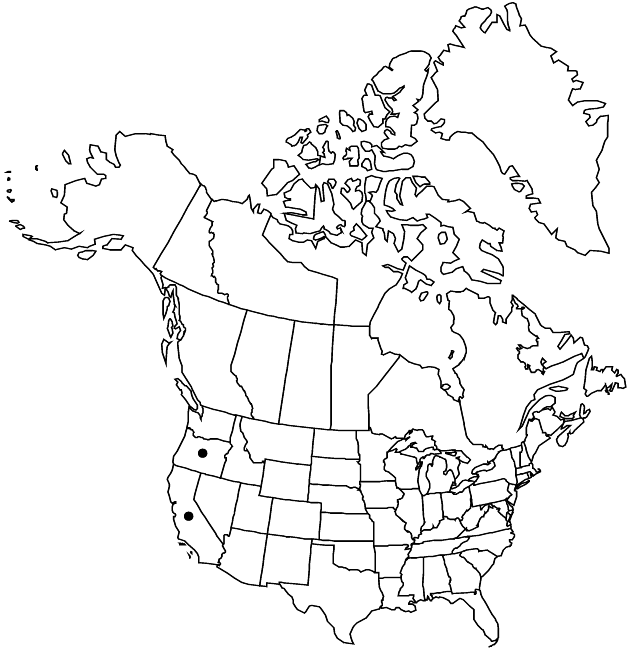Difference between revisions of "Lasthenia californica"
Edwards’s Bot. Reg. 21: sub plate 1780. 1835.
FNA>Volume Importer |
imported>Volume Importer |
||
| Line 6: | Line 6: | ||
|place=21: sub plate 1780. 1835 | |place=21: sub plate 1780. 1835 | ||
|year=1835 | |year=1835 | ||
| + | }} | ||
| + | |special_status={{Treatment/ID/Special_status | ||
| + | |code=F | ||
| + | |label=Illustrated | ||
| + | }}{{Treatment/ID/Special_status | ||
| + | |code=E | ||
| + | |label=Endemic | ||
}} | }} | ||
|basionyms= | |basionyms= | ||
| Line 31: | Line 38: | ||
-->{{Treatment/Body | -->{{Treatment/Body | ||
| − | |distribution= | + | |distribution=Calif.;Oreg. |
|discussion=<p>Subspecies 3 (3 in the flora).</p><!-- | |discussion=<p>Subspecies 3 (3 in the flora).</p><!-- | ||
--><p>Plants of <i>Lasthenia californica</i>, especially those in coastal populations, have the largest, showiest heads in the genus. Report of <i>L. californica</i> from Massachusetts was not confirmed for this study</p> | --><p>Plants of <i>Lasthenia californica</i>, especially those in coastal populations, have the largest, showiest heads in the genus. Report of <i>L. californica</i> from Massachusetts was not confirmed for this study</p> | ||
| Line 70: | Line 77: | ||
|basionyms= | |basionyms= | ||
|family=Asteraceae | |family=Asteraceae | ||
| − | |distribution= | + | |distribution=Calif.;Oreg. |
|reference=None | |reference=None | ||
|publication title=Edwards’s Bot. Reg. | |publication title=Edwards’s Bot. Reg. | ||
|publication year=1835 | |publication year=1835 | ||
| − | |special status= | + | |special status=Illustrated;Endemic |
| − | |source xml=https:// | + | |source xml=https://bibilujan@bitbucket.org/aafc-mbb/fna-data-curation.git/src/bb6b7e3a7de7d3b7888a1ad48c7fd8f5c722d8d6/coarse_grained_fna_xml/V19-20-21/V21_842.xml |
|tribe=Asteraceae tribe Heliantheae | |tribe=Asteraceae tribe Heliantheae | ||
|subtribe=Asteraceae (tribe Heliantheae) subtribe Baeriinae | |subtribe=Asteraceae (tribe Heliantheae) subtribe Baeriinae | ||
Revision as of 21:03, 27 May 2020
Annuals or perennials, to 40 cm (cespitose). Stems erect or decumbent, branched proximally or distally, ± hairy. Leaves linear to oblanceolate or oblong, 8–210 × 1–5.5(–15) mm, (± fleshy in coastal forms) margins entire or with 3–5+ teeth, faces glabrous or ± hairy. Involucres campanulate to depressed-hemispheric or hemispheric, 5–14 mm. Phyllaries (persistent or falling with cypselae) 4–16 (in 1–2 series), elliptic to ovate or lanceolate to oblong, hairy. Receptacles conic, muricate, glabrous. Ray florets 6–16; laminae linear to oblong, 5–18 mm. Anther appendages deltate to sublanceolate. Cypselae black to gray or silver-gray, linear to narrowly clavate, to 4 mm, glabrous or hairy; pappi 0, or of 1–7 translucent (rarely opaque), brown (rarely white), linear to subulate, aristate scales.
Distribution

Calif., Oreg.
Discussion
Subspecies 3 (3 in the flora).
Plants of Lasthenia californica, especially those in coastal populations, have the largest, showiest heads in the genus. Report of L. californica from Massachusetts was not confirmed for this study
Selected References
None.
Lower Taxa
Key
| 1 | Annuals; coastal or inland; n California, s Oregon | Lasthenia californica subsp. californica |
| 1 | Perennials (sometimes flowering first year); coastal; California | > 2 |
| 2 | Roots fleshy, clustered; stems erect, branched distally; leaf blades 1–2+ mm wide | Lasthenia californica subsp. bakeri |
| 2 | Roots usually not fleshy or clustered; stems decumbent, branched proximally; leaf blades 1.5–5.5(–15) mm wide | Lasthenia californica subsp. macrantha |